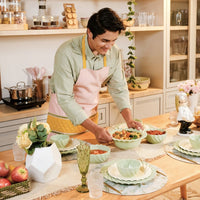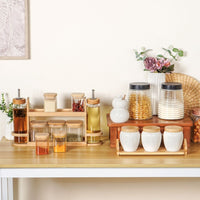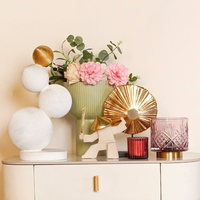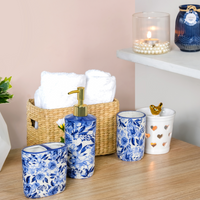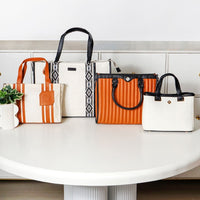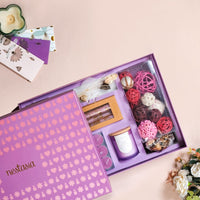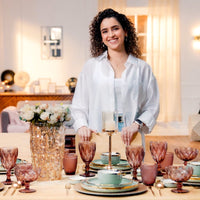Designing a child’s room that stays tidy and functional can feel like an uphill battle. Between the growing pile of toys, the rotating wardrobe, art supplies, and books, storage often becomes an afterthought. But ask any interior designer, and they’ll tell you that smart kids’ room storage ideas can completely transform how the space looks and works.
From multi-functional furniture to playful toy storage hacks, here’s your ultimate guide to keeping your child’s room as organised as it is delightful.
1. Start with Multi-Functional Furniture
One of the most reliable tricks designers use is investing in multi-functional furniture. These are pieces that serve more than one purpose and save space in the process.
1. Beds with built-in drawers are great for storing extra bedding, toys, or seasonal clothes. They take advantage of under-bed space that would otherwise go unused.
2. Ottomans and benches with hidden compartments are perfect for tucking away soft toys or extra blankets. They can also double up as reading corners or seating spaces.
3. Desks with built-in storage keep art supplies, puzzles, and stationery in check, without needing an additional cabinet.
These smart pieces help you reduce visual clutter while maximising floor space, especially important in smaller rooms.
2. Baskets and Bins: The Designer’s Secret Weapon
No list of kids’ room storage ideas is complete without mentioning storage bins and baskets. They’re flexible, lightweight, and surprisingly aesthetic when chosen right.
1. Choose cotton, felt, or synthetic storage bins for storing everything from clothes to toys and laundry.
2. Use colour-coded baskets to teach younger kids how to sort their belongings, or label each one with a picture or text to make clean-up time feel like a game.
3. Stackable storage baskets can be used in closets, under desks, or even left out as decor pieces when chosen in the right colours and patterns.
These storage bins are loved by both designers and parents because they help hide clutter while still being accessible to little hands.
3. Wall-Mounted Shelves and Floating Units
1. When floor space is limited, the only way is up. Designers frequently use wall-mounted shelves and floating storage units to add both functionality and charm.
2. Use them for books, soft toys, or decorative items that add personality to the room.
3. Vary the height of the shelves so younger children can reach their daily essentials, while less-used items can go on the top levels.
4. Try using themed shelves shaped like clouds, stars, or animals to blend storage with decor.
These units help keep things organised while clearing up floor space for play.
4. Under-Bed Magic: Storage That Disappears
1. One of the most underrated storage ideas for kids’ rooms is utilising the space under the bed.
2. Opt for pull-out drawers built into the bed frame or invest in low-profile storage bags for off-season clothing and bulky toys.
3. Rolling crates or under-bed bins with wheels are also easy for children to slide out and access themselves.
This is a favourite trick for designers working with compact or shared bedrooms, as it keeps daily-use areas open and uncluttered.
5. Toy Rotation and Open Storage Display
Too many toys can overwhelm kids and create visual chaos. A smart toy storage solution is the concept of rotation.
1. Keep only a few toys on display, while the rest stay stored away in labelled bins or drawers. Swap them out every couple of weeks to keep the play area fresh and exciting.
2. Use open trays or wooden platters for current favourites. This keeps the space tidy and allows children to see their toys without having to rummage.
3. Wall-mounted racks are ideal for storing pretend play items like aprons, doctor kits, or costume accessories.
This method keeps the room visually calm while encouraging kids to focus on a few activities at a time.
6. Kid-Friendly Labelling and Easy Access
1. Encouraging kids to stay organised means making storage accessible and easy to understand.
2. For toddlers and preschoolers, use picture labels on drawers and bins to help them identify where things belong.
3. Adjustable shelves grow with your child and can be rearranged as their needs evolve.
4. Use hooks at lower heights for hanging backpacks, jackets, or hats that they can reach on their own.
These thoughtful touches promote independence while making daily routines smoother for both kids and parents.
7. Create Storage Zones for Specific Activities
Divide the room into functional zones such that each activity has its dedicated storage. This is one of the most effective kids’ room storage ideas loved by professional designers.
1. A reading nook can include a comfy chair, a floating bookshelf, and a small basket for bedtime stories.
2. An art zone with a small table, stool, and a set of drawers for paints and crayons keeps the mess contained.
3. A toy zone with open bins and trays encourages independent play while simplifying cleanup.
By assigning zones, you help children associate storage with specific activities. It also makes the room easier to reset at the end of the day.
8. Let Storage Reflect Their Personality
Storage doesn’t have to be boring. In fact, letting your child be part of the decision-making can make them more likely to use it.
1. Choose storage cushions or bean bags with pockets for storybooks or soft toys.
2. Go for brightly coloured bins or ones featuring their favourite animals or cartoon characters.
3. Allow children to personalise their labels using stickers, drawings, or tags with their names.
When the room reflects their personality, kids feel more connected to the space, and that often results in tidier habits.
9. Think Vertical and Modular for Growing Needs
As kids grow, their storage needs change. That’s where modular and vertical systems come in handy.
1. Use pegboards or vertical storage walls that can hold anything from art supplies to sports gear.
2. Modular cubes can be reconfigured as your child’s hobbies evolve, switching from toy bins to book cubbies or craft supply storage.
3. Add extra storage above wardrobes or cabinets to keep rarely used items tucked away.
These ideas ensure that your storage furniture remains useful for years instead of needing a complete overhaul every few months.
10. Keep It Safe and Easy to Maintain
While designing storage solutions, safety should always be a priority.
1. Avoid furniture with sharp corners, and make sure shelves and tall units are securely anchored to the wall.
2. Choose non-toxic materials, especially for baskets or bins that younger children handle often.
3. Ensure lids are not too heavy and that handles are easy for little fingers to grip.
Storage should not just be stylish or smart, it should also be safe, especially in rooms where kids are constantly exploring.
Final Thoughts: The Balance Between Storage and Style
Designing a functional kids' room does not mean compromising on aesthetics. With the right combination of multi-functional furniture, storage bins, and cleverly planned toy storage, you can maintain a neat and stylish space that still feels playful.
The key is to think like a designer but plan like a parent. Prioritise accessibility, flexibility, and fun. Because when storage solutions are part of the design from the beginning, you create a room that supports your child’s growth and imagination, while keeping the mess in check.
Frequently Asked Questions
1. What is the best way to organise toys in a small room?
Use under-bed drawers, wall-mounted shelves, and colour-coded bins to make the most of vertical and hidden spaces. Rotating toys also helps reduce clutter.
2. Are storage bins better than traditional cabinets for kids’ rooms?
Yes. Storage bins are lighter, more accessible, and can be moved around easily. They’re also available in fun colours and textures that suit children’s decor.
3. How can I make storage fun for kids?
Let them choose colours, use labels with pictures, and incorporate playful elements like storage animals, printed baskets, or DIY label tags.
4. What kind of multi-functional furniture is ideal for children?
Beds with drawers, benches with internal storage, and desks with compartments are ideal as they combine use with storage, helping keep the room tidy without taking up extra space.

